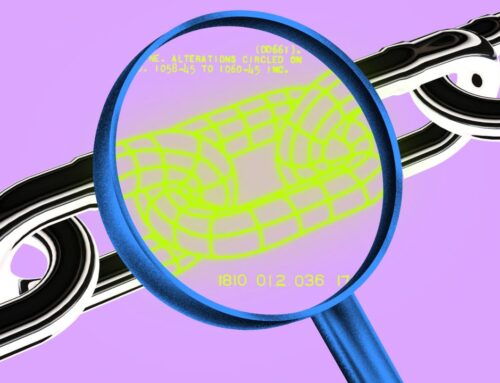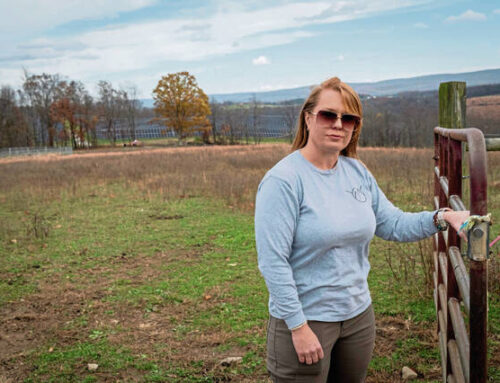Jesse Levinson of Amazon Zoox: ‘The public has less patience for robotaxi mistakes’
May 7, 2025
Jesse Levinson, co-founder of and chief product officer at the Amazon-owned robotaxi Zoox, and his team are betting that the vehicles’ pod-shaped design will be the preferred shape of future autonomous transportation.
The start-up is testing its technology on roads across six US cities with plans to launch commercially this year in Las Vegas, followed by San Francisco. The vehicles have no steering wheel and four inward facing seats.
Based in San Francisco’s Bay Area, Levinson has been working on self-driving vehicles for about two decades. He developed algorithms for the runner-up entry in the 2007 Darpa Urban Challenge, the driverless car contest sponsored by the US Department of Defense that helped spawn Google’s self-driving unit Waymo, before founding Zoox in 2014.
Zoox was acquired by Amazon in 2020 for $1.3bn and has since grown from 100 to more than 2,500 employees.
The Financial Times’ San Francisco reporter Rafe Uddin and Levinson rode in a Zoox robotaxi as it toured the Design District of San Francisco. They discussed the company’s manufacturing plans and public safety.
—
Jesse Levinson: Do you want to do the honours, or would you like us to?
Rafe Uddin: Press this start button here?
JL: All right. And off we go.
RU: It’s nice and smooth so far. Also quite different to all the other vehicles that we’re used to, including the Waymos. Talk me through the design and why you came to a decision that this was the form you were going to adopt.
JL: This is a much more natural social configuration where you can actually have a conversation with people. So, there are four of us here, and we’re all able to talk to and see each other. And that’s nice, right? Cars changed the configuration, with everybody facing the same way. It’s all designed around a driver with a steering wheel and pedals. That’s a suboptimal configuration for anything other than a human having to drive.

RU: This is quite a low ride. In terms of rider comfort, what are you doing to improve things, particularly because vehicles encounter bad road conditions in cities including potholes?
JL: One of the cool things we’ve been able to do with a ground-up vehicle is build it in what’s called an active suspension. Every wheel is able to go up and down independently so we can smooth out not 100 per cent of the bumps in the road but most of them.
RU: You’re testing in San Francisco. I took a Waymo here to meet you. They’ve rolled out. They’re deploying. What lessons are you drawing from their customers’ experience?
JL: We’ve been encouraged by Waymo’s progress and the adoption and reaction to the robotaxi concept. It wasn’t that long ago that people were sceptical that we’d see this technology within a decade, or some people even said within our lifetime.
What’s cool to see with Waymo is that, not only does it work well, but people like it and, if anything, are probably willing to pay a little bit more to be in a robotaxi. Our value proposition is that we have this unique customer experience, which we think is better than any other vehicle on the road, whether or not it has a driver.
A little bit of an interesting traffic situation here. That was tricky, but it handled it well.
RU: We had a car jutting out that was double parked. A couple of pedestrians around. People coming at us from all sides on a multi-lane road. It seemed to handle that well and it was not uncomfortable.
JL: You felt the [sudden] stop but that was for a good reason. When you’re in San Francisco, you sometimes do have to react to sudden things. We try to do it as smoothly as possible.

RU: In terms of testing, it’s mostly employees and staff. What is the public feedback like?
JL: For the last year we have been inviting our friends and family. We’re in the process of rolling out our Zoox Explorer [programme], what we call our unpaid riders, in Las Vegas. The reactions have been extremely positive. We always take it with a little bit of a grain of salt until we get truly random public reactions.
RU: The plan is to launch in Las Vegas this year. Any firm timeline on when that’s going to happen now? Any date?
JL: We have said we’ll be open to the public this year, and we’re still on track for that. It’s fair to say the second half of this year at this point. San Francisco will come a bit after Las Vegas.
Tech Exchange

The FT’s technology reporters discuss the future of the digital world with the industry’s leaders, innovators and academics. The dialogues examine progress made as well as potential solutions to global problems. Read them all here
RU: Talk me through the decision to go down the bespoke route. Waymo is a system added on top of conventional cars. Why opt to do this instead of just developing the core technology?
JL: Our perspective from the beginning has been that the customer experience we can offer in a ground-up vehicle is well beyond anything you can offer in a retrofitted car. We talked about that earlier. This configuration, you just can’t do that in a car. Cars were not designed this way. They weren’t designed to be bidirectional.
You’ll notice, from the exterior, this vehicle is quite short. One of my favourite surprising stats is it’s about a metre shorter than a Toyota Corolla, which is a small car. That’s great for dense urban areas. But on the inside, there’s so much more room than inside even a large car.
We’ve been able to add a lot more safety and redundancy into this vehicle. People talk about safety but reliability is important, too. We don’t want our vehicles getting stuck on the side of the road because they couldn’t finish a mission because there was a hardware component failure.
We have two motors and two batteries and two braking systems, two steering racks, four sensor pods.
Lastly, the economics are much better. Of course, it costs more to develop and build this vehicle, but then it pays off. So, for example, we put a 132-kilowatt hour battery in this robotaxi. That’s much bigger than any of the batteries you’ll find in other retrofitted robotaxis. That means we can drive all day and all night long on a single charge.
RU: Is there a mileage figure?
JL: We are basically targeting a full day’s worth of operation, so daytime and night-time, with the vehicles coming home in the middle of the night to charge. Obviously, in the middle of the night there’s also significantly lower demand for these vehicles, so it’s not like we need the whole fleet out and about at four in the morning.
RU: How will the fleet size, therefore, compare with other operators?
JL: Our goal is to have a competitive fleet size. In San Francisco, there are around 8,000 Uber and Lyft drivers at any one time. So, that gives you a sense for the type of scale we’d like to operate at eventually. But, of course, it will take us some time to get to that level.
But really, we think that when you have on the order of 1,000 to 2,000 robotaxis in a city like San Francisco, then you’re offering a competitive, fantastic service with no downsides, relative to existing services.

RU: Can we talk about the cost of building a bespoke car? The decision to invest and spend the money to design, build and manufacture screams that it’s going to be higher than the cost of adding a kit to a car?
JL: Yes and no. There are two kinds of costs. There’s the cost to develop this, which, of course, is significant. Then there’s the cost to build them. Our robotaxi costs more than a regular car, but so do retrofitted robotaxis. What we look at more than the cost of the vehicle is the cost of putting the vehicle in service. We don’t sell robotaxis. We sell rides.
When you do that maths, it turns out that, even though the vehicle costs more than a car, it’s a relatively small fraction of the overall cost of running a service like this, because there’s electricity, insurance and credit card processing, tele-operations and data, maintenance. All these other charges add up. We’re at the point where the cost of the robotaxi is less than half of all of that.
Plus, there’s a great road map for those costs to come down every year as their volumes increase and technology matures. So it’s not an area that we’re particularly concerned about.
RU: How much have costs changed in the past few years?
JL: It’s come down quite a lot, but these are still manufactured off prototype tooling. We have a couple dozen of these driving around public roads right now. We’ll have a lot more by the end of the year. And then next year is when we start what we call serial production, which is where you have the production tooling, and you start getting in hundreds and then thousands, and eventually tens of thousands of them. Those vehicles will cost significantly less than these because of the scale.
RU: Talk a little bit more about serial production and the plans there. Will that be using the same facilities that you currently have, or are you planning a new manufacturing site?
JL: We’ve been working on that. We haven’t yet announced exactly where we’ll be manufacturing. It is in the Bay Area, but we’ll be sharing more on that soon.
RU: The plan is to manufacture in the US?
JL: Yes, that’s right.
RU: Seems like an opportune moment with tariffs.
JL: We didn’t necessarily foresee the current climate with that, but we’re happy to be a California company actually manufacturing vehicles in California. There isn’t a lot of that right now, so we’re proud of that.
RU: Are you seeing any effects from tariffs when it comes to components, sensors? And is that carrying through into the cost of manufacturing as well?
JL: We’re tracking this on a daily basis, because there’s always a new development. We’re seeing small fluctuations in the bill of materials. But because the supply chain is quite global, and a lot of it is coming out of the US and the manufacturing is here, we’re probably more insulated from the swings than most companies are.
RU: A couple of your competitors have made a bit of a bet in terms of importing a number of cars from China. Waymo is importing Geely’s Zeekrs. What does that mean in terms of Zoox’s competitiveness, particularly on cost?
JL: We’re proud to be manufacturing our vehicles in California. That does seem to be extra advantageous at the moment. I can’t comment on anybody else’s unit economics or business plans. But I will say that, again, we’re comfortable with our strategy, and probably more so now than ever.
RU: What components are you able to source from the US at the moment?
JL: We’re probably not sharing the specifics of which parts come from where, partly for competitive reasons. But a lot of them come from the US. A lot of the subcomponents are assembled in the US.
One thing to note, our manufacturing strategy is a bit different from traditional automotive, in that we don’t have, for example, a paint shop and a body shop. So, we source larger components from our supply chain. And we call what we do at the end a final assembly process.

RU: Is the plan to try and do a bit more of what a car manufacturer might do in terms of manufacturing, particularly, you mentioned earlier trying to increase to something like 1,000 to 2,000 robotaxis in San Francisco?
JL: We have the capability to manufacture tens of thousands of robotaxis with our existing facilities. And again, while that’s fairly low volume from an automotive perspective when you sell cars, from a robotaxi perspective, that’s a pretty meaningful amount of volume.
RU: You founded Zoox in 2014. We’re now 11 years down the line but the company’s vehicles haven’t hit the roads with the public. How important was the Amazon acquisition in 2020?
JL: Existentially important. We had raised $1bn prior to the acquisition. That’s a lot of money by any normal standards. It just turns out not to be a lot of money in this particular space. We no longer had the ability to raise the type of capital you need to compete in this market as a private company.
RU: Why Amazon and not, say, a car manufacturer or somebody else?
JL: Amazon is one of the most successful and valuable companies in the world. For them, they’re making a long-term bet on something that hopefully will be worth at least hundreds of billions of dollars some day, if everything goes well.
If you look at most of the major car companies. It’s hard for them to make this type of investment, where the timelines are a bit uncertain and the payouts aren’t guaranteed. And so, you need probably an even larger company with more ability to deploy long-term capital.
RU: Since that deal, we’ve had some significant moments in self-driving. Uber sold its autonomous driving unit a few months after Zoox was acquired. General Motors closed down its Cruise robotaxi project at the end of last year after executives were earlier found to have mishandled a collision incident. What does it tell us about the broader market?
JL: When we started Zoox in 2014, we didn’t know it would be this expensive. We knew it would be hundreds of millions or low billions, but we wouldn’t have anticipated it probably being double-digit billions to develop, deploy and scale the technology.
One thing we get reminded of over and over is the importance of doing things the right way, the respect you need for the safety case, for taking your time and being patient. Companies that have rushed or skipped steps have come to regret it.

RU: Do you think Cruise skipped steps on safety?
JL: At least the way they handled their incident seems like it left quite a bit to be desired. If you look at how quickly they attempted to scale from their first driverless vehicles on public roads to having hundreds of them in a short amount of time, probably that was not something that they were ready for, even though they had done an impressive job developing that technology.
It’s a reminder that transparency is incredibly important. And there’s not going to be a lot of forgiveness for, again, skipping steps or not being forthcoming with information.
RU: Uber now talks about this as a trillion-dollar market. They sold their self-driving unit. Do you feel like they were shortsighted?
JL: Not necessarily. The capital requirements are no joke. And Uber, as large as it is, it’s taken them until about last year to start making money. The other thing is it’s very hard for companies to do autonomous driving as a side project. It’s tempting to say ‘oh this is existentially important for us, we’re going to invest in it’. But if the leadership of the company is not thinking about this every day, it’s really, really hard.
RU: Uber has partnered with Waymo in a few cities. Could you see yourself partnering with a ride-hailing service such as Uber, or is the plan to go it alone?
JL: We are building our own Zoox ride-hailing app and intend to offer a service directly to customers. That doesn’t mean we aren’t open to having conversations with other players. We do have regular conversations with other companies.
RU: It sounds like you’re having active discussions with Uber.
JL: We’ve talked to Uber and Lyft over the years. It would be strange if we refused to talk to them, right? We have really good relationships with both of those companies.
RU: Cruise were developing a vehicle similar in some ways to Zoox. With them exiting the market, it leaves Zoox as one of the few US players with this vehicle type. Do you miss them?
JL: It’s an interesting way of phrasing it. I do feel quite bad for the people who worked super hard at Cruise to develop that, and then now they’re not going to see it happen. We’ve probably been working on this for longer and thinking about it more deeply. And what I mean by that is, the Zoox vehicle that you rode in is a truly ground-up vehicle. Every single component of it was designed to be a robotaxi.
If you look at the Origin [Cruise’s equivalent to Zoox’s vehicle], it was a half ground-up vehicle. So the chassis and the foundation of that was a car platform, and then they put a custom shell on it. Our fundamental belief is that Zoox is a better way to get around a city. It’s safer, more reliable and makes more economic sense, and people would much prefer to be in it. That’s been our bet since 2014.
RU: Cruise’s exit means self-driving has mainly been left to Alphabet’s Waymo and Amazon’s Zoox in the US market. What does it mean to leave it in the hands of a few large technology companies?
JL: It’s a reflection of the immense difficulty of the problem and the importance of having a safety case that can show that you’re meaningfully safer than humans. That’s a tall order. It’s way too big of a market for any one company. We’ve said that from the beginning. And, yes, there’s still going to be plenty of competition.
RU: Both Uber and Cruise’s projects were curtailed by safety incidents. Zoox have been investigated for less serious incidents. The [National Highway Traffic Safety Administration] concluded one of those investigations earlier this year. How worried are you that a single serious incident could curtail the project?
JL: Any time you’re operating on public roads, and busy ones like the Las Vegas Strip and San Francisco, you’re not going to be able to operate forever with no incidents. That’s not possible. What we look at is being many times better than humans at the core safety metrics like collisions, injuries, and ultimately fatalities.
Our belief is, as long as we are able to maintain that type of a safety record, and as long as we are transparent with regulators and are upfront about how our system works, that we should be able to withstand the inevitable incidents that will occur over time. If we’re not many, many times safer than humans, that will be problematic for us. And frankly, it should be.
I don’t believe that robotaxi operators should only be held to the same safety standard as the average human driver. The public has less patience for robotaxi mistakes than it does human mistakes.
RU: You’re using lidar [systems, which use pulsed laser light to help autonomous vehicles generate a three-dimensional map of the surrounding environment]. Waymo uses lidar. Aurora uses lidar. A couple of your competitors think that that’s just too expensive. Can you come to market without those components and still operate safely?
JL: Nobody’s done it yet, but that doesn’t mean it’s impossible. Zoox’s perspective is not that ours is the only way to do things. What I will say is that, again, we’re selling rides and not vehicles. When you look at the cost of sensors per trip, we’re talking about pennies.
Even if you can solve human-level driving without those sensors, and nobody’s done that yet, but even if you could, we would much rather have the extra sensors, and have a significantly higher level of safety. And I think almost everybody would be willing to pay a certain number of pennies per mile for that extra amount of safety. That’s certainly our viewpoint.

RU: Tesla wants to deploy robotaxis without those sensors this year. When I talk to industry figures, they say, we could get to the point where you didn’t need lidar, but it’s not coming in the next few months. What do you think of their approach? If there is an incident, does it risk undermining the whole self-driving effort?
JL: I wouldn’t go that far. There is some element of we’re all in this together. So there’s certainly a hope and expectation that all of the serious players are taking safety seriously. I can’t speak for other companies. I can say that our approach has always been to give ourselves every opportunity to build a really safe vehicle.
RU: Elon Musk’s Department of Government Efficiency is firing people at relevant government agencies overseeing self-driving technologies. Are you worried that the goalposts will shift under this administration?
JL: I can’t comment on all of the internal dynamics. What I would say is that we’re having really positive and constructive conversations with all the different relevant regulatory agencies we work with. That includes NHTSA, it includes the [Departments of Motor Vehicles] in the states that we operate in, in California, the [Consumer Product Safety Commission]. And so we haven’t seen any reason to believe that that’s going to interfere with what we’re working on.
RU: Could you see standards potentially diluted in a competitor’s favour? Is that something that you worry about?
JL: That’s not something that we are anticipating. And I have faith in the US government to have the correct checks and balances and maintain public safety.
Search
RECENT PRESS RELEASES
Related Post




